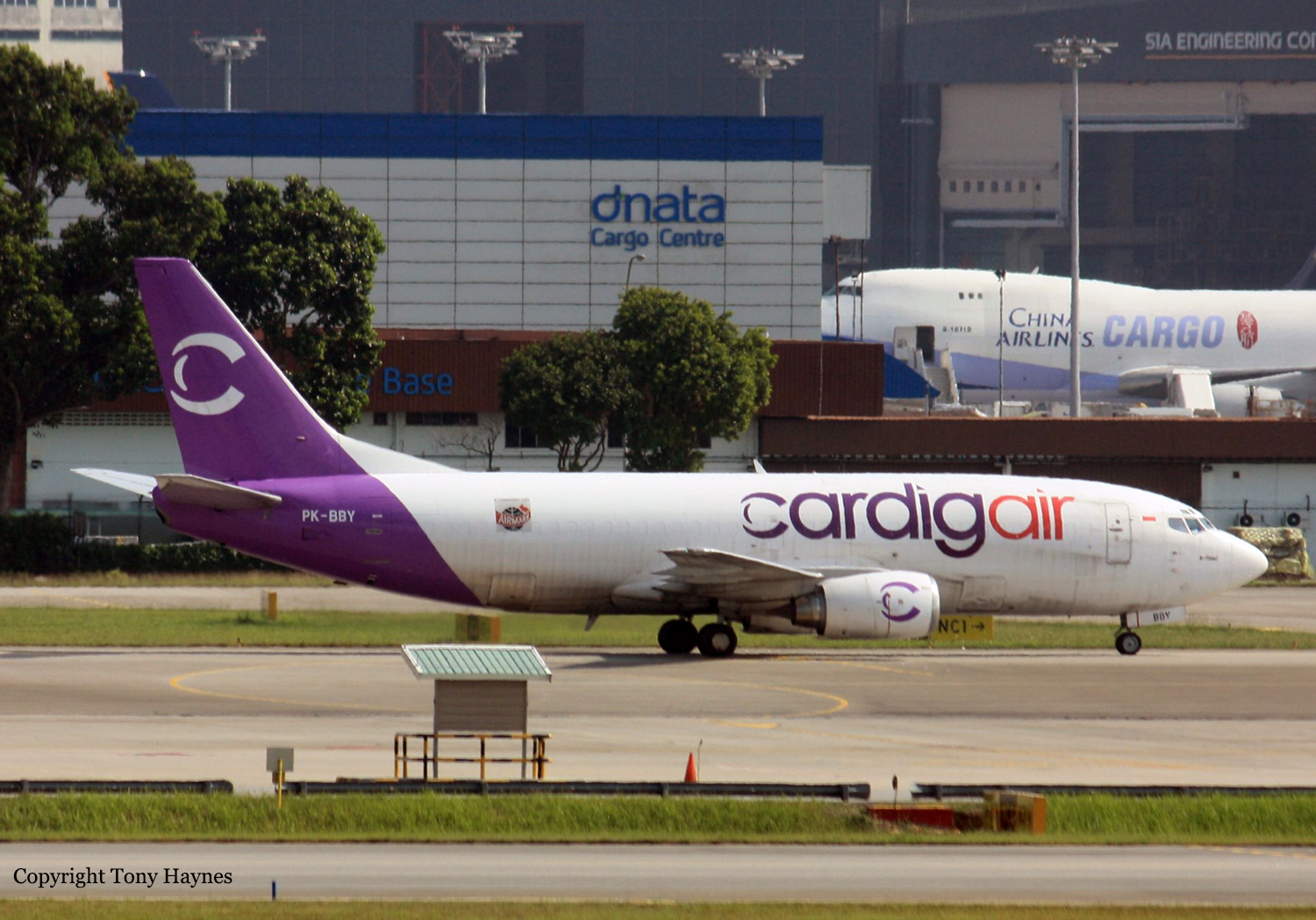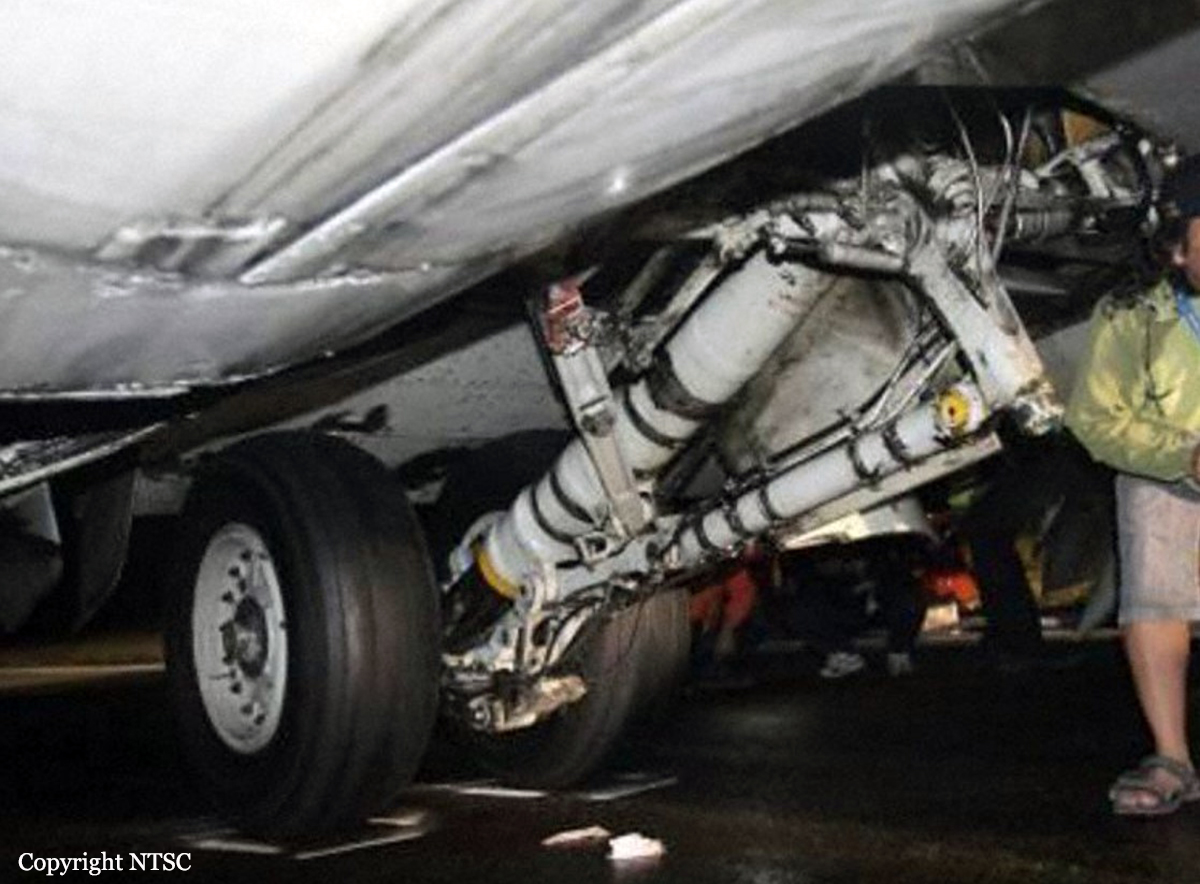Crash of a Boeing 737-3Q8 in Wamena
Date & Time:
Aug 28, 2015 at 1547 LT
Registration:
PK-BBY
Survivors:
Yes
Schedule:
Jayapura – Wamena
MSN:
23535/1301
YOM:
1986
Flight number:
8F189
Crew on board:
2
Crew fatalities:
Pax on board:
0
Pax fatalities:
Other fatalities:
Total fatalities:
0
Captain / Total hours on type:
4877.00
Copilot / Total hours on type:
342
Aircraft flight hours:
54254
Aircraft flight cycles:
38422
Circumstances:
On 28 August 2015 a Boeing 737-300 Freighter, registered PK-BBY was being operated by PT. Cardig Air on a scheduled cargo flight from Sentani Airport (WAJJ) Jayapura to Wamena Airport (WAVV) Papua, Indonesia. At 1234 LT (0334 UTC), the aircraft departed to Wamena and on board the aircraft were two pilots, and 14,610 kg of cargo. The Pilot in Command (PIC) acted as Pilot Flying (PF) while the Second in Command (SIC) who was under line training acted as Pilot Monitoring (PM). There was no reported or recorded aircraft system abnormality during the flight until the time of occurrence. At 0637 UTC, when the aircraft approaching PASS VALLEY, the Wamena Tower controller provided information that the runway in use was runway 15 and the wind was 150°/18 knots, QNH was 1,003 mbs and temperature was 23 °C. At 0639 UTC, the pilot reported position over PASS VALLEY, descended passing FL135. The Wamena Tower controller instructed the pilot to report position over JIWIKA. At 0645 UTC, the pilot reported position over JIWIKA and continued to final runway 15. At 0646 UTC, the pilot reported position on final runway 15 and Wamena Tower controller provided landing clearance with additional information of wind 150°/15 knots and QNH 1,003 mbs. At 0647 UTC, the aircraft touched down about 35 meter before the beginning runway 15 with vertical acceleration of 3.68 G. The left main landing gear collapsed and the left engine contacted to the runway surface. The aircraft stopped at about 1,500 meters from runway threshold. No one was injured on this occurrence.
Probable cause:
According to factual information during the investigation, the Komite Nasional Keselamatan Transportasi determines the findings of the investigation are listed as follows:
1. The pilots held valid licenses and medical certificates.
2. The aircraft had a valid Certificate of Airworthiness (C of A) and Certificate of Registration (C of R), and was operated within the weight and balance envelope.
3. There were no reports of aircraft system abnormalities during the flight.
4. After passed JIWIKA on altitude 10,000 feet, the FDR recorded the engines were on idle, the average rate of descend was approximately 2,000 feet per minute.
5. At altitude approximately 8,000 feet, the flap selected to 40 position and moved to 39.9° one minute 25 seconds later.
6. The BMKG weather report was wind 150°/14-19 knots and the Wamena Tower controller reported to the pilot that the wind was 150°/15 knots. The information of gust wind, which indicated the possibility of windshear, was not reported to the pilot.
7. The EGPWS “CAUTION WINDSHEAR” active on altitude of 5,520 feet.
8. 06:45:43 UTC, the engine power increased when the aircraft altitude was on 5,920 feet prior the EGPWS altitude call “ONE HUNDRED” heard.
9. Started from 06:45:45 UTC, the FDR recorded the CAS increased from 148 knots to 154 knots followed by N1 decreased gradually from 73% to 38%. Three seconds before touched down, the rate of descend was constant on value 1,320 feet per minute followed by EGPWS warning “SINK RATE”.
10. The aircraft touched down at about 35 meters before the beginning runway 15 with the vertical acceleration recorded of 3.68 G.
11. The trunnion link of the left Main Landing Gear (MLG) assembly was found broken and the left main landing gear collapsed.
12. The FDR data contained of 107 flight hours consisted of 170 flight sectors which recorded five times of the vertical acceleration more than 2 G during landing at Wamena. The accumulation of such value of vertical acceleration might lead to landing gear strength degradation.
13. The Visual Approach Slope Indicator (VASI) of runway 15 was not operated after the runway extension.
14. The investigation found several touchdown marks on the pavement before the runway 15.
15. Excessive rubber deposit was found on the surface of runway 15 at about 600 meter started from the runway threshold.
16. The absence of speed correction following the information of headwind of 15 knots and pilot crew briefing after activation of EGPWS caution windshear indicated that the pilot did not aware of the existing windshear, that might be contributed by the absence of gust wind information.
17. The large thrust reduction was not in accordance with the FCOM for windshear precaution and resulted in rapid descend.
18. The accident flight collapsed the landing gear, the FDR recorded the vertical acceleration was 3.683 G which was within the landing gear design limit. This indicated the degradation of landing gear strength.
Contributing Factor:
The large thrust reduction during the windshear resulted in rapid descend and the aircraft touched down with 3.683 G then collapsed the landing gear that had strength degradation.
1. The pilots held valid licenses and medical certificates.
2. The aircraft had a valid Certificate of Airworthiness (C of A) and Certificate of Registration (C of R), and was operated within the weight and balance envelope.
3. There were no reports of aircraft system abnormalities during the flight.
4. After passed JIWIKA on altitude 10,000 feet, the FDR recorded the engines were on idle, the average rate of descend was approximately 2,000 feet per minute.
5. At altitude approximately 8,000 feet, the flap selected to 40 position and moved to 39.9° one minute 25 seconds later.
6. The BMKG weather report was wind 150°/14-19 knots and the Wamena Tower controller reported to the pilot that the wind was 150°/15 knots. The information of gust wind, which indicated the possibility of windshear, was not reported to the pilot.
7. The EGPWS “CAUTION WINDSHEAR” active on altitude of 5,520 feet.
8. 06:45:43 UTC, the engine power increased when the aircraft altitude was on 5,920 feet prior the EGPWS altitude call “ONE HUNDRED” heard.
9. Started from 06:45:45 UTC, the FDR recorded the CAS increased from 148 knots to 154 knots followed by N1 decreased gradually from 73% to 38%. Three seconds before touched down, the rate of descend was constant on value 1,320 feet per minute followed by EGPWS warning “SINK RATE”.
10. The aircraft touched down at about 35 meters before the beginning runway 15 with the vertical acceleration recorded of 3.68 G.
11. The trunnion link of the left Main Landing Gear (MLG) assembly was found broken and the left main landing gear collapsed.
12. The FDR data contained of 107 flight hours consisted of 170 flight sectors which recorded five times of the vertical acceleration more than 2 G during landing at Wamena. The accumulation of such value of vertical acceleration might lead to landing gear strength degradation.
13. The Visual Approach Slope Indicator (VASI) of runway 15 was not operated after the runway extension.
14. The investigation found several touchdown marks on the pavement before the runway 15.
15. Excessive rubber deposit was found on the surface of runway 15 at about 600 meter started from the runway threshold.
16. The absence of speed correction following the information of headwind of 15 knots and pilot crew briefing after activation of EGPWS caution windshear indicated that the pilot did not aware of the existing windshear, that might be contributed by the absence of gust wind information.
17. The large thrust reduction was not in accordance with the FCOM for windshear precaution and resulted in rapid descend.
18. The accident flight collapsed the landing gear, the FDR recorded the vertical acceleration was 3.683 G which was within the landing gear design limit. This indicated the degradation of landing gear strength.
Contributing Factor:
The large thrust reduction during the windshear resulted in rapid descend and the aircraft touched down with 3.683 G then collapsed the landing gear that had strength degradation.
Final Report:






